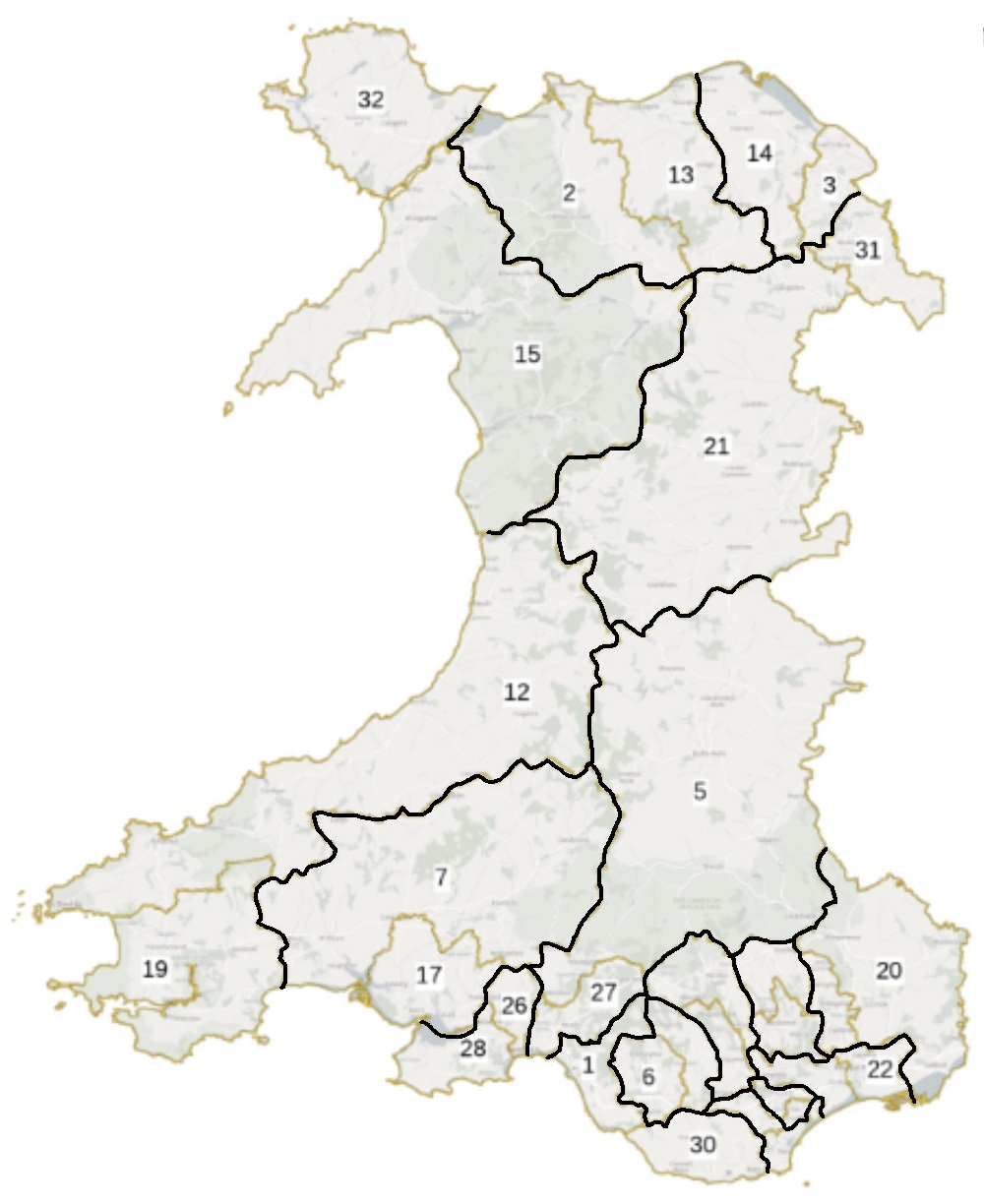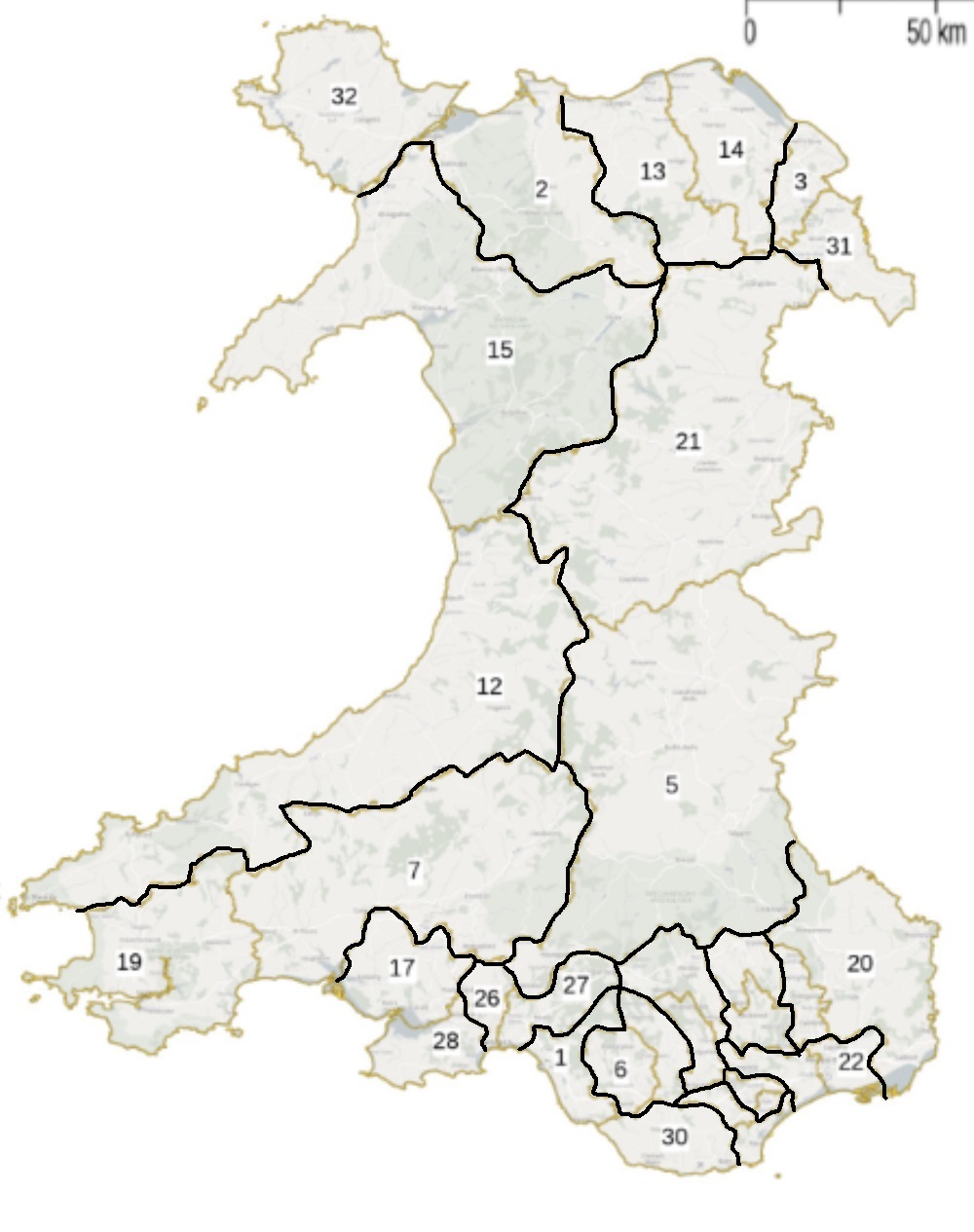Drakeford and Price’s Senedd reforms are a big step forward – but hopefully not the end of the journey

Ifan Morgan Jones
Today was Christmas for Welsh politics geeks as Plaid and Welsh Labour leaders Adam Price and Mark Drakeford put forward their plans to reform the Senedd.
They include enlarging the Welsh parliament to 96 members and the creation of 16 multi-member wards, each electing six Senedd Members through proportional representation.
While these are just recommendations to a cross-party commission, with the weight of both party leaders behind them, who together have a hefty majority in the Senedd, it’s very likely that the final system will look something quite like this.
I won’t relitigate whether the Senedd needs 36 new members here. Personally, I think that short-staffing your parliament, whose members are collectively in charge of billions, just to save a few million is a false economy.
I will instead discuss the voting reforms. These don’t perhaps include everything that proponents of progressive voting reform would have liked to see, but it’s a great deal better than the current system.
At present, over half of the seats are decided by the archaic ‘winner takes all’ First Past the Post, which forces voters to vote tactically for whoever they think has a chance of winning the constituency.
The new system proposed by Drakeford and Price is fully proportional – the norm around the world, but it would be the only fully proportional system on the UK mainland.
It would essentially allow people something close to a free vote for the party of their choosing, from a list of candidates chosen by each party, and there would be less need for tactical voting as long as they are confident that their party was likely to pick up at least one of the six seats on offer.
The system used at last year’s Senedd election also had an element of proportional representation on the list system, which ‘topped up’ those parties who lost out on the constituencies.
However having two different voting systems in one election – one of those extremely confusing – was always a bad thing. Under the new system, everyone will have one vote, and you vote for whoever you want to win, which is much simpler to explain to the public.
Very welcome too are proposed changes which require parties to put forward equal numbers of male and female candidates, and alternate between men and women when preparing their candidate lists.
Drawbacks
What this isn’t, however, is the Single Transferable Vote – a more proportional system which would allow the public to list their candidates in order of preference.
STV would have been much more helpful to the smaller parties, as it would have allowed people to rank them high up their ballot paper without feeling they were wasting their vote. Smaller parties like the Greens, for instance, would have benefitted particularly from such a system.
STV would also have allowed the public to rank candidates as well as parties. This would have been important I think as a closed list essentially means that a few Senedd Members are going to be almost impossible to get rid of. If you’re, say, a Labour member at the top of a closed list in the south Wales valleys or a Plaid Cymru candidate on a closed list in Dwyfor Meirionnydd you would almost be guaranteed re-election in a way you wouldn’t under STV because you’d also be ‘competing’ against other candidates from your own party.
So why not go for STV? Well, voting systems are always decided by the winners of the elections and there are elements of the system chosen by Drakeford and Price that suit them as the larger parties.
Electing six Senedd Members to every constituency essentially guarantees a seat or two each for the big three (Labour, Plaid, Tories) and will also keep out some of the smaller parties that tended to target the regional list at previous elections. Mustering some 7-8% of the vote will no longer be enough to bag yourself a Senedd seat on the tail end of the list. It will raise that bar to closer to 12% or so.
This will mean in practice that what we’re likely to see are most constituencies dominated by the three main parties – probably two or three Labour in every seat in the valleys and a Plaid and Conservative member, and perhaps a Lib Dem on the tail end. And the reverse in areas where Plaid or the Conservatives dominate.
While it won’t help Wales-wide smaller parties whose support is broad but shallow, this system might however make it easier for geographically concentrated smaller parties to get elected – a Blaenau Gwent People’s Voice or Llais Gwynedd type party, perhaps.
Constituencies
There are also issues with Drakeford and Price’s proposals regarding how the constituencies are going to be carved up. As it’s too late to redraw them before the 2026 elections, these proposals suggest just grouping the new 32 constituencies created for future Westminster elections to create 16 new ones.
I had a go at this and couldn’t find a way of doing so without creating some unavoidably very odd combinations. Some of the new Westminster seats are problematically huge anyway and linking them up creates some very oddly shaped, very large behemoths.

The biggest problem is that an odd number of seats in the north of Wales makes it necessary to separate Powys and link that constituency up with a seat in the south. A greater Brecon and Radnorshire reaching down the Vale of Neath to Port Talbot is probably the best solution but nevertheless a strange one.
An alternative might be to place Dwyfor Meirionnydd and Ceredigion together, which solves some issues elsewhere but creates one very long Cardigan Bay constituency.

There is also the issue that, because Ynys Môn is smaller than the other constituencies (ironically to grant it protected status as an island), it would have a marginally weaker voice in any potential pairing.
This is likely to just be a temporary fix however until the Senedd constituencies are revamped again post 2026.
Good, not perfect
It’s important to remember that devolution is always ‘a process not an event’ as Ron Davies said. While this compromise isn’t perfect, by creating larger multi-member wards it makes it easier to move towards an even more proportional system in future.
The statement by Adam Price and Mark Drakeford made clear that these changes could be on “an interim basis” in order to be able to get them in place by the 2026 elections.
British politics is the embodiment of the saying ‘there’s nothing as permanent as a temporary solution’. So I wouldn’t be surprised to see us linger at this halfway house longer than anyone perhaps expected.
But if devolution is to progress, perfect can’t be the enemy of getting good things done. And these wide-ranging reforms are, overall, a step in the right direction.
Support our Nation today
For the price of a cup of coffee a month you can help us create an independent, not-for-profit, national news service for the people of Wales, by the people of Wales.





Party lists are evil and completely counter to the idea of democracy.
I want to vote for candidates, not parties.
Full STV MUST be used.
See Thursday’s Stormont election, where no fewer than seven parties and two Independents were elected to the 90-seat chamber, and that was actually worse than in 2017, due to the Greens losing representation! Any system will throw up statistical oddities, however – the Traditional Unionist Voice had 7.5% of the vote, but only 1 seat, partly because their votes were spread too thinly, but also transfer toxicity.
Full STV cannot ever ensure gender equality. I imagine that is why Welsh Labour and Plaid Cymru are proposing a list system.
Ditch the quota system and go for STV. People should be selected by their politics and not whether or not they are male or female.
No, but you can have rules (for parties) that enforce candidate equality quotas. And STV makes it possible for independents to stand. Democracy means letting the people decide. If a party chooses to nominate six elderly white men they may not get many elected. And STV allows for cross-party voting, e.g. 1st and 2nd pref to people from party A, but 3rd to a good candidate from party B. This just institutionalises the tribalism and dead weight of the party machines.
STV would probably be a better option but the system proposed is a significant improvement on what we’ve got (what was imposed on us). It may be more difficult for an independent/minority party candidate to get elected that with STV but it’s far from impossible. The further you go from FPP the more likely coalition government is and the more likely a selection box of parties and individuals end up in government. It follows that the greater the change the greater the cultural adjustment that will need to be taken by the electorate. Given the reluctance at the moment of… Read more »
Agreed, these proposals are a big improvement on what we’ve got at the moment at least, so let’s give them a chance.
Think we’ll get STV in time llywelyn – but least this is a step in the right direction
“Require putting forward equal number male and female” is democracy?
Yes it is.
Retaining the list system gives party leadership complete control over who will be selected to stand. It is not only anti democratic it will result in a Senedd full of YES MEN AND YES WOMEN>
And jobs for life for those privileged enough to be near the tops of the list.
Drakeford and Price haven’t gone for an STV system because it would work against their parties. To pretend that this carve-up is “interim” is just dishonest.
There’s no reason they couldn’t have gone straight for STV.
The de Hondt system is more proportional than FPTP, but this particular proposal is no more proportional than the current Senedd system and is likely to lead to almost exactly the same result. I estimate that if the vote in 2021 had used this system, the result would have been Lab 48, Con 27, PC 19 Libs 1 and Others 1. If, instead of 16, there were 8 constituencies with each one electing 12 members then you would have a more proportional result. However, as others have mentioned, the main problem with any ‘closed list’ system is that it is… Read more »
You’re assuming everyone would have voted in the same way under this new system. However, those people who voted tactically in constituencies under First Past the Post would have no reason to vote tactically under this new system as their first choice will now have a far more realistic chance of winning. It will be interesting to see how much of a difference this will make to the overall result. It may only make a small difference, but at least it would be a more credible result at the end of the day, reflecting the will of the people in… Read more »
I agree. Under this model, I envisage more Plaid breaking through in the Valleys as third or fourth options and the same happening for Labour in Y Fro.
Large seats = very distant politicians. There are much better options.
Why not 96 smaller seats electing a member each by Suplimentary Vote (much closer to the people) or even 32 seats with 3 members elected by STV or list?
I would end up living in a ridiculously large Conwy, Bangor, Rhyl, seat if this model is followed through, with very distant members. Not a good idea, in my humble opinion.
There is a widespread confusion about what it takes to enable democracy. Big constituencies with several members returned from each looks good but as you say it becomes distant. One asks – “what is the real representative value of those who come in say 4th 5th and 6th on this proposal”. Compared to the 3rd elected on the 32 constituency model I would say that it is far less. Also in the odd event of Lower Powys stretching via the Vale of Neath to the south coast you’d have a pretty big piece of turf to cover with presumably little… Read more »
Many people say the same thing about MSs voted into the Senedd via the top-up list system. At least we’ll get rid of the ridiculous two-tier system in elections with these proposals.
STV is barely fairer than fptp.
For individual’s votes to count, we need PR.
Hello Michael I am by no means a fan of the present Senedd Government but people get what they voted for.I do hope that you voted in The Senedd election.If you did, Good Man if not then you should remain silent.
We must have the Single Transferable Voting system (STV).
It is widely used.
The Scottish and Northern Ireland parliaments went directly to this system.
Who on Earth decided we need an interim ‘party lists’ system ?
It is Plaid Cymru policy to implement the STV system as the best PR system.
It is certainly also the preference for the Liberal Democrats and the Green Party.
It is the system promoted by the Election Reform Society.
Has it much to do with power within Welsh Labour?
With its connections outside Wales?